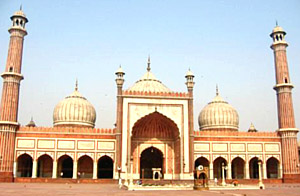Babur was the man behind establishing the Mughal Empire in India. He brought with himself the art and culture of the Muslims and with time these got absorbed within the India diaspora. Thus the architecture and sculptures during Babur era for the first time introduced India to the Persian art and architecture. Most of the buildings consecrated by Babur were mainly mosques.
 The sculptures during Babur era include the following monuments:
The sculptures during Babur era include the following monuments:
• Sculpture of Kabuli Bag Mosque, Panipat
• Sculpture of Jami Masjid, Sambhal (Rohilkhand)
• Sculpture of Lodi Fort Mosque, Agra
All these monuments date back to the 16th century. One of the most talked about mosques in India is said to have been commissioned by Babur: Babri Masjid. For the first time the sculpture of the Babri Mosque presented a balanced amalgamation of the Hindu and Persian arts. Thus a new Indian school of architecture evolved known as the Indo Islamic architecture. The motifs carved on the Mughal monuments consisted of both the Muslim and native Hindu styles.
However, not all the sculptures during Babur era mirrored this characteristic. In fact the reign of Babur in India was for a short span of time. Hence it was left upon his successors to enrich Indian culturally.



